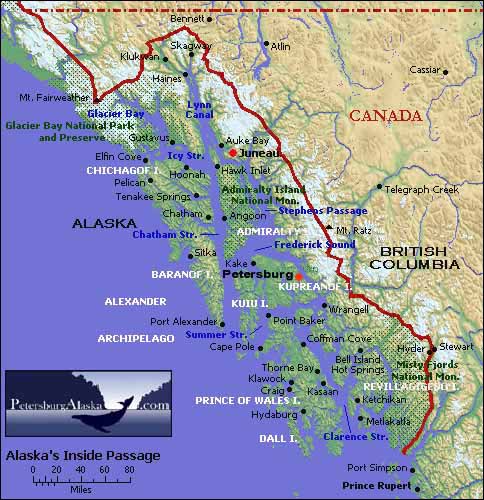In July 1897 a small steamship called the Excelsior brought a small group of men back to San Francisco with gold they had just discovered in the Klondike. This was shortly followed by another ship bringing more miners and a ton of gold. The newspapers went crazy and men from all over the world flocked to Dawson City seeking their fortunes. Of course, very few did.

The route to the gold fields for those seeking their fortune was not simple. There was the difficult sea route to the mouth of the Yukon River at St Michael in the Bering Sea and then an upstream journey by paddlesteamer, but it was expensive, long and difficult. Those with less resources travelled a more direct route by sea to Skagway, a small port on the Inside Passage. They then trekked over the coastal mountains to the headwaters of the Yukon. It was then downstream by steamer to Dawson. The route was arduous and many died in the mountains despite the Canadian authorities demanding that stampeders (as they were called) only entered the Yukon Territory if they had a ton of suppliers. But born out of such difficulties came a business opportunity - a narrow-gauge (3 ft) rail route was built over the mountains joining up to the river. This is the White Pass and Route which still exists today and which we travelled on last month. It is a fascinating railway and truly spectacular. The connection to an historic river transport system also fascinates me.
White Pass and Yukon Railway
Route the original stampeders took
An original trestle bridge
(now retired from use!)
At the summit
The tiny community of Carcross now relies on summer tourism but it doesn't take much to visualise the "town" during the Goldsush and its immediate aftermath. The size of Tutshi is impressive and its characteristic design must have appeared awe inspiring at the turn of twentieth century. I certainly impresses me today. Tutshi was 167 ft long and displaced 1041 tons. The sight of one of these wood burning steamers navigating through Five Finger Rapids using winches, and the annual spring races to be the first steamer to Dawson City following the ice-melt must have been something to behold. Unfortunately as Tutshi was being restored when she was heavily damaged by arson in 1990. Some idea of the steamer in her prime can be seen here in 1987. It was common to see the Yukon sternwheelers on the river bank because they were often hauled out for the winter.
Remains of SS Tutshi
Replica of Tutshi's Sternwheel
Tutshi's Boiler
Interpretation Board Image of Tutshi on the River Bank
Bennet Lake Beach, Carcross
Railway Bridge, Carcross
Bennet Lake

Sternwheeler negotiating the Five Finger Rapids using Winches
If you want to find out more about the river boats I can recommend the excellent well-illustrated book by Graham Wilson "Paddlewheelers of Alaska and the Yukon". There are some also some helpful websites for visitors such a Destination Carcross Yukon. If you are near Skagway a trip along the White Pass and Yukon Route into the interior just has to be a must.
















